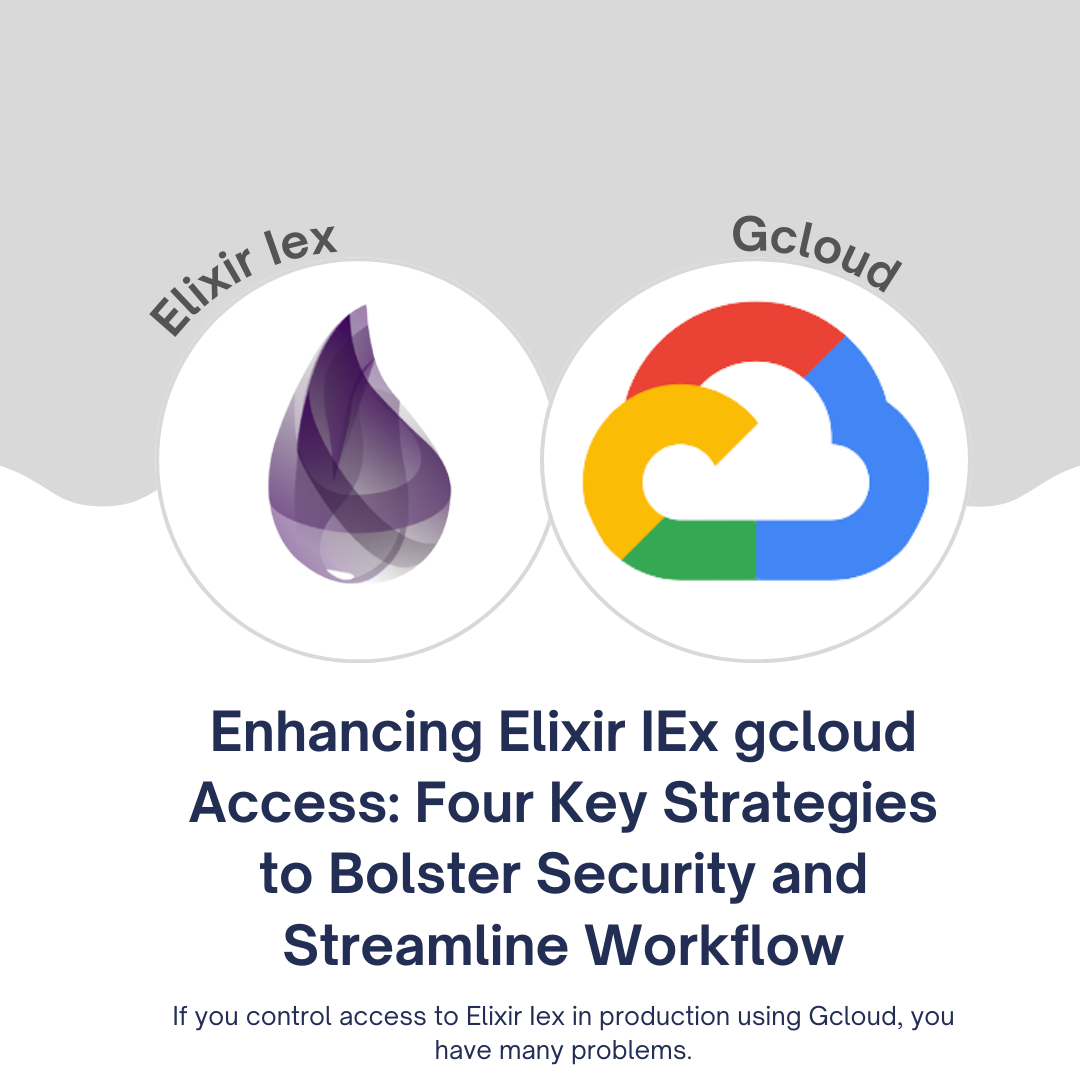Enhancing Elixir IEx gcloud Access: Four Key Strategies to Bolster Security and Streamline Workflow

If you're managing access to Elixir IEx in production through gcloud, you may be facing several challenges. In this article, we'll delve into the five primary issues, their consequences, and practical steps to mitigate their impact.
The Challenges of Elixir IEx gcloud Access
Fast access to skilled engineers in a production environment is crucial for maintaining product velocity. Timely troubleshooting, bug fixes, and incident resolutions depend heavily on rapid data access. However, many teams struggle with suboptimal solutions for granting access, resulting in significant security risks and workflow inefficiencies.
The Five Key Challenges
- Building Infrastructure is a PainSetting up infrastructure for Elixir IEx access using gcloud can be a cumbersome task.
Hidden VulnerabilitiesSeveral crucial components are often missing from your access management, creating concealed vulnerabilities. These vulnerabilities include:
- Single Sign-on & Multi-Factor Authentication (MFA)
- Audit Trials and Personally Identifiable Information (PII) Protection
- Compliance with Regulations like GDPR, PCI, SOC2, and HIPPA
- Developer Experience
Addressing the Challenges
To mitigate these challenges, you can follow these four steps:
1. Gradual Implementation
Use the 80/20 rule to incrementally introduce essential features:
a. Add Elixir IEx to Existing Systems
If you're already using Google Workspaces, you don't need an LDAP directory. Look for tools that can help integrate Single Sign-On (SSO) and Multi-Factor Authentication (MFA) into your workflow. Cloud Shell solutions from AWS or Google Cloud, as well as tools like Runops, can be beneficial. Prioritize integrating Google OAuth for SSO and MFA, avoiding unnecessary complexity.
b. Prioritize Features Relevant to Your Industry
Focus on the Elixir IEx access features that align with your industry's requirements. If regulatory compliance is less critical, prioritize Developer Experience, SSO, and MFA. Streamline the process, aiming for a two-step access method. Conversely, industries with strict regulations, like fintechs, should prioritize compliance features before optimizing Developer Experience.
2. Leverage Comprehensive Solutions
Simplify your access management by consolidating Elixir IEx access with other systems:
Integrate Elixir IEx, AWS/GCP, databases, Kubernetes, and other management needs into a single tool. While you may have specialized tools for Elixir IEx, having one tool that handles all access requirements reduces complexity. For example, Runops can manage cloud provider access, streamlining the user experience across various services.
Favor a slightly less optimal user experience across multiple systems in one tool over the complexity of managing multiple separate tools.
3. Add Friction to Unwanted Access Methods
While not an ideal solution, adding friction to undesirable access methods can encourage the adoption of secure practices:
If engineers currently access Elixir IEx quickly but without necessary audit trails or compliance measures, introduce a form submission step to incentivize the preferred method. The addition of this step makes the fastest approach less appealing. People generally dislike filling out forms, prompting them to choose the more secure method.
Similarly, if users tend to make unauthorized changes via a web console, introduce a Jira request step to access it. Although this doesn't eliminate existing access, it encourages teams to opt for a more controlled and automated approach. Over time, you can enhance the alternative method to surpass the convenience of the web console.
By following these four steps, you can address the hidden vulnerabilities associated with Elixir IEx gcloud access, improve security, compliance, and user experience while streamlining access management.
